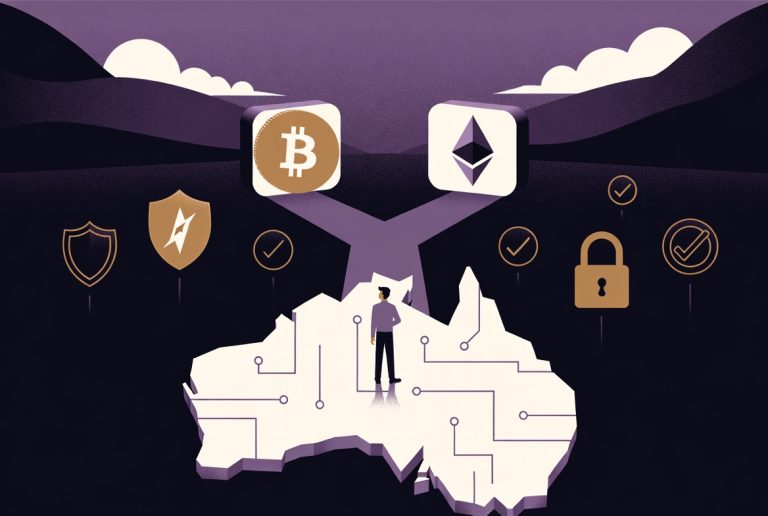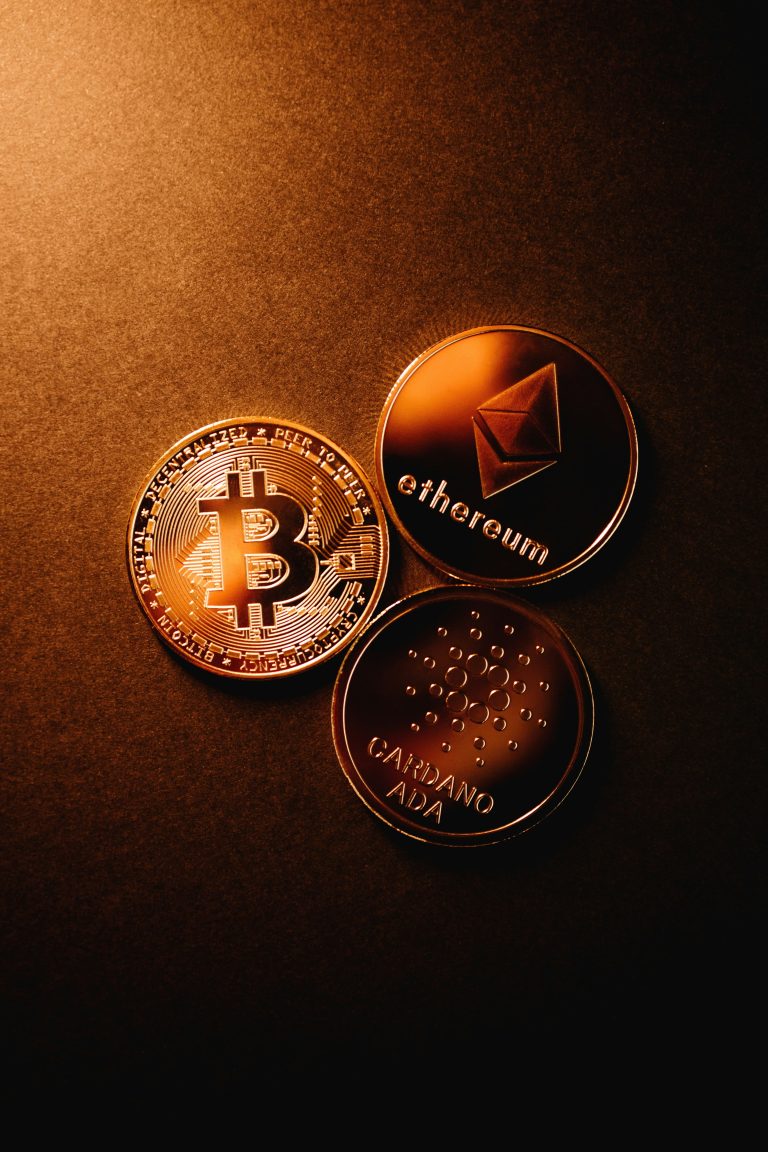Blockchain Basics 2025: Powering Crypto’s Future
Distributed ledger technology might seem complex at first. However, understanding the basics is essential if you’re getting into cryptocurrencies and decentralised finance. In this guide, we’ll break down blockchain technology in plain English, covering the core principles, how it works, and what it means for Australians in the digital asset space.
Unveiling the Core of Blockchain Technology
So, what is blockchain technology exactly? Think of it as a digital record book that nobody owns but everyone can see.
Here’s how it works: First, each record is called a “block.” Then, every block is cryptographically linked to the one before it, forming an unbreakable “chain” of data. This design builds transparency and trust into every transaction and consequently, everyone on the network can verify the records.
The Journey of a Digital Transaction Block
Adding a new block to the blockchain follows clear steps:
Step 1: First, a transaction happens and gets grouped with other recent transactions into a candidate block.
Step 2: Next, network participants validate the block to check it’s legitimate and accurate.
Step 3: Finally, once verified, the new block gets permanently added to the existing chain. It becomes part of the public record forever.
This validation process is crucial. Moreover, it keeps the ledger secure and prevents tampering.
Understanding Consensus Mechanisms for Trust
Blockchain networks rely on consensus mechanisms to stay reliable. Consensus mechanisms are the rules everyone must follow to agree on which transactions are valid.
In practice, these mechanisms ensure that every computer (node) on the network has an identical, accurate copy of the blockchain. Therefore, this distributed agreement prevents fraud and maintains a consistent record without needing a central authority to oversee things.
The Vital Role of Crypto Mining Validation
One of the oldest consensus mechanisms is proof-of-work. You see this with crypto mining validation in networks like Bitcoin.
Here’s the process: Miners compete to solve complex maths puzzles. Importantly, the first one to succeed validates a new block of transactions. This takes massive computing power, which makes it incredibly expensive for bad actors to try altering the blockchain.
Once a miner validates a block, it’s broadcast to the network. Subsequently, other nodes verify it. Then it’s permanently added to the chain, creating an immutable record.
Why mining matters:
– Firstly, it secures the network against attacks
– Secondly, it validates transactions without centralised control
– Thirdly, it distributes new cryptocurrency as rewards
Mining has proven highly secure for over a decade. Nevertheless, it does consume significant energy. This is why researchers are exploring more efficient consensus mechanisms.
Distributed Ledger Security: A New Paradigm
Blockchain architecture strengthens distributed ledger security through decentralisation. Specifically, data is spread across thousands of nodes globally. As a result, this eliminates single points of failure that hackers could target.
Furthermore, every transaction is encrypted and time stamped. This makes it extremely difficult to alter. Overall, the distributed and cryptographic design creates a remarkably resilient system.
In comparison, the security model is fundamentally different from traditional systems. Instead of trusting one company to keep accurate records, blockchain spreads that trust across the entire network. To fraudulently alter a transaction, you’d need to compromise most of the network at once. In established networks with massive computing power spread globally, that’s practically impossible.
Decentralised Versus Centralised Systems: A Comparison
Understanding decentralised vs centralised systems outlines why this technology matters.
Centralised systems: One entity controls everything. Consequently, this creates vulnerabilities single points of failure, censorship risks, and data breach susceptibility. If that centralised database gets hacked, all the data is at risk.
Decentralised systems: In contrast, control and data are distributed across the network. Therefore, this enhances resilience, transparency, and user autonomy. Additionally, no single entity can alter records or block access on their own.
Ultimately, this fundamental difference redefines trust in digital interactions. It shifts from “trust the institution” to “trust the mathematics and distributed consensus.”
Navigating DeFi Volatility and Market Swings
If you’re an Australian exploring decentralised finance (DeFi), you need to understand the risks. While DeFi platforms offer exciting new ways to participate in finance, they also carry significant dangers.
Recent market corrections and price swings prove this. Furthermore, innovation moves fast, and regulations are still evolving. Consequently, this can expose you to major losses.
DeFi risks include:
– Smart contract vulnerabilities
– Liquidity crises
– Governance failures
– Market sentiment shifts
A prudent approach means:
– Firstly, do thorough research before investing
– Secondly, understand how platforms and assets actually work
– Additionally, recognise that high potential returns come with high risks
– Moreover, never invest more than you can afford to lose
– Finally, make sure you understand the technology and economics before jumping in.
Safeguarding Your Digital Future in Australia
Working with blockchain and crypto requires smart risk management and this is especially true for Australians navigating local regulations.
Basic security practices:
– Use strong, unique passwords for every platform
– Enable two-factor authentication
– Consider hardware wallets for significant holdings
These simple steps dramatically reduce your vulnerability to common attacks.
Stay informed about regulations:
– Understand your tax obligations
– Know reporting requirements
– Comply with Anti-Money Laundering and Counter-Terrorism Financing (AML/CTF) rules
Watch out for scams:
– Phishing attempts
– Fake investment schemes
– Fraudulent exchanges
Awareness and being proactive will help you engage with digital assets more securely.
Educational Pathways for Blockchain Mastery
Want to go beyond the basics? Fortunately, formal education provides real advantages.
Specifically, the 11304NAT Certificate III in Crypto Asset and Blockchain Technologies is designed for people entering the blockchain space. It covers:
- How cryptocurrencies work
- Blockchain architecture
- Security best practices
- Australian regulatory requirements
Understanding crypto mining validation, consensus mechanisms and distributed ledger security at a deeper level can transform you from casual observer to informed participant.
The Certificate III gives you practical skills for real-world scenarios. Whether you’re considering a career in blockchain, making investment decisions, or just wanting to understand this technology properly, it provides a solid foundation that is nationally recognised.
Key Takeaways for Your Blockchain Journey
- Blockchain provides a decentralised, secure, and transparent way to record transactions
- Consensus mechanisms like crypto mining validation ensure the ledger stays accurate and prevents fraud
- Distributed ledger security eliminates single points of failure by spreading data across the network
- Understanding decentralised vs centralised systems shows you the technology’s real advantages and limits
- DeFi carries risks you need comprehensive awareness and thorough research
- Formal education through qualifications like the 11304NAT Certificate III speeds up your knowledge and skills
- Security practices and regulatory awareness are essential for safe engagement
Conclusion
Blockchain technology is innovating how we record, verify, and share digital information. Understanding what blockchain technology is at its core, plus the mechanisms that secure it, gives you confidence in this evolving space.
Whether you’re exploring cryptocurrencies, considering DeFi, or investigating blockchain in other sectors, solid foundational knowledge is essential.
For Australians, this knowledge is particularly valuable as the current regulatory landscape creates both risks and opportunities. By combining technical understanding, smart risk management, and ongoing education, you can navigate the blockchain ecosystem with clarity and confidence.
Disclaimer
This article is for informational and educational purposes only and should not be construed as financial advice. Cryptocurrency investments carry significant risk, including the potential loss of your entire investment. The content provided does not take into account your individual financial situation, objectives, or risk tolerance. Before making any investment decisions, you should conduct your own research and consult with a qualified financial advisor. Past performance is not indicative of future results. The author and publisher are not licensed financial advisors and do not provide personalised investment advice. Always invest responsibly and only with funds you can afford to lose.
AUSBLOCK: https://ausblock.com.au/ – Explore educational pathways in blockchain technology, designed to guide you through the intricacies of distributed ledgers, cryptocurrencies, and their real-world applications.


